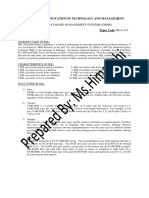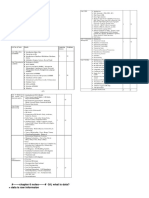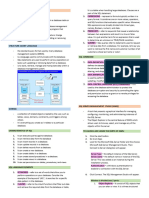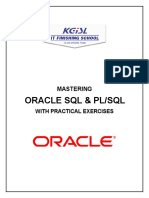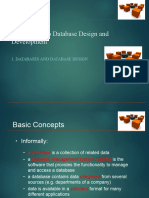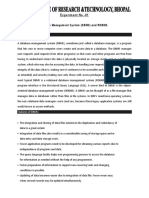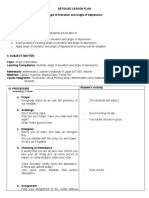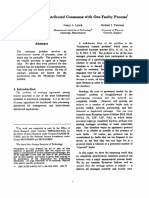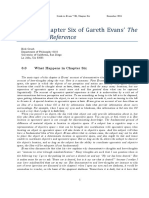0% found this document useful (0 votes)
137 views9 pagesAssignment 1
The document contains definitions of database and DBMS, an explanation of the ANSI-SPARC three-level architecture, the main functions of a database administrator, definitions of key database terms, the components of SQL, tools used in Oracle databases, advantages of DBMS, data types in SQL, and the difference between data and information. It also provides the syntax for create and insert queries in SQL.
Uploaded by
Sandeep PatelCopyright
© Attribution Non-Commercial (BY-NC)
We take content rights seriously. If you suspect this is your content, claim it here.
Available Formats
Download as DOC, PDF, TXT or read online on Scribd
0% found this document useful (0 votes)
137 views9 pagesAssignment 1
The document contains definitions of database and DBMS, an explanation of the ANSI-SPARC three-level architecture, the main functions of a database administrator, definitions of key database terms, the components of SQL, tools used in Oracle databases, advantages of DBMS, data types in SQL, and the difference between data and information. It also provides the syntax for create and insert queries in SQL.
Uploaded by
Sandeep PatelCopyright
© Attribution Non-Commercial (BY-NC)
We take content rights seriously. If you suspect this is your content, claim it here.
Available Formats
Download as DOC, PDF, TXT or read online on Scribd
/ 9




